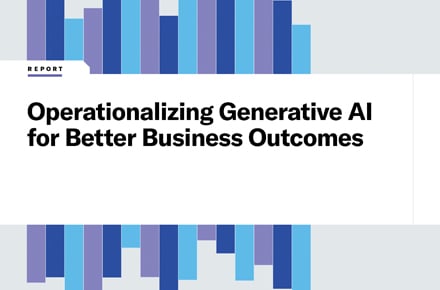Four reasons your device life cycle strategy needs more than a refresh
Oktober 2, 2025 / Tim Rashkin
Short on time? Read the key takeaways:
- Device complexity grows when different worker types need different devices from different manufacturers, but coordinated management through a single partner eliminates the administrative burden.
- Smart refresh cycles use actual device performance and usage patterns to optimize replacement schedules instead of arbitrary warranty timelines.
- Rolling forecasts prevent supply chain delays by predicting device demand 30, 60, and 90 days ahead based on usage patterns and business plans, ensuring hardware is on hand when needed.
- Financial flexibility means building TCO models and business cases that fit your requirements rather than forcing you into rigid procurement processes.
Your device refresh schedule runs like clockwork. Procurement follows standard vendor relationships. Help desk tickets get resolved within SLA targets. Yet your workforce still struggles.
Devices don't match their work patterns, supply shortages create productivity gaps, and budget constraints delay critical upgrades. Your workforce suffers in silence rather than engage IT for support. The real culprit in these challenges is a lack of orchestration.
Most organizations manage device procurement, deployment, and support as separate functions and disjointed processes rather than a unified approach that matches how your workforce operates. Organizations resolve this challenge by focusing on four key areas:
1. Multi-vendor support that reduces complexity
Here's what typically happens when organizations try to simplify their device landscape: they pick one preferred vendor and assume that reduces complexity. Different work requires different tools.
Manufacturing environments illustrate this clearly. Frontline workers need ruggedized devices. Office workers need standard laptops. Specialized teams want high-performance workstations. When you force everyone into the same vendor ecosystem, you either compromise functionality or create expensive exceptions.
Supporting multiple OEMs can reduce complexity through coordinated management. Better coordination beats fewer vendors. Successful organizations work with partners who provide B2B2B coordination – one interface that manages relationships with all their hardware vendors. You get the right tools for different work groups while eliminating the administrative burden of managing separate vendor relationships.
2. Staying ahead of supply chain disruptions
Supply chain problems don't announce themselves. By the time you’re ready to order 200 laptops for a department expansion, lead times have stretched to months. Your options become expensive rush orders or productivity losses while people wait.
Rolling forecasts change this dynamic. Instead of reactive ordering, you analyze usage patterns, hiring plans, and historical data to predict demand 30, 60, and 90 days ahead. This provides lead time to secure inventory at better prices while ensuring devices are ready when needed.
But forecasting only works if you know where existing devices are. Many organizations discover during audits that significant portions of their inventory have vanished, not because they’re stolen but because they’re untracked.
Enhanced asset control provides end-to-end traceability from manufacturing through retirement. Smart asset lockers give secure, 24x7 access for shift workers. Geofencing alerts you when devices move outside expected locations and allows you to lock and wipe devices from anywhere in the globe. The result is real-time visibility that prevents security risks and wasteful purchases.
3. Smart refresh cycles based on actual performance
Most refresh schedules follow a simple rule: replace everything after three or four years, regardless of performance or usage. This misses opportunities for cost savings, productivity improvements, and sustainability objectives.
Consider two university faculty members. The English professor primarily writes and conducts video conferences. The research scientist runs complex simulations and manages large datasets. Why should their devices follow identical replacement schedules?
Smart device management uses actual performance data and usage patterns to create tailored refresh schedules for different roles. Instead of arbitrary timelines, you replace devices based on need and performance degradation.
This works across industries. Healthcare organizations can optimize allocation between mobile patient care teams and administrative staff. Public sector agencies can tailor strategies for different departments. For example, law enforcement has different requirements than the transportation administration.
4. Financial models that work for your business
Most device procurement follows the same pattern: calculate total cost, submit capital expenditure request, wait for approval, and hope the budget doesn't get cut. This process adds months to deployments while your workforce makes do with inadequate equipment.
Organizations that see the best results build total cost of ownership models with the right fit-for-purpose financial engineering (capital purchases, operational expenses, flexible leasing, and utility models) and choose approaches that better accommodate their financial objectives and business requirements.
Taking it a step further, utility consumption models solve problems that traditional purchasing can't address. Universities deal with fluctuating enrollment. Electoral commissions need massive temporary workforces during elections. Instead of owning unused devices or scrambling for temporary equipment, utility models let you pay based on usage.
The key is working with a partner who structures these arrangements consistently across regions and regulatory environments. While OEM financing varies significantly between countries, a comprehensive program provides uniform options within your global financial frameworks.
Building your coordinated approach
Device life cycle management can become your competitive advantage or operational bottleneck. Organizations that coordinate these functions will likely achieve better employee experiences, improved financial flexibility, and reduced operational overhead.
These four areas provide the framework, but execution requires the right partner. Unisys Device Subscription Service (DSS) provides a single interface that manages multiple OEM relationships, combines data for smarter decisions, and offers financial flexibility to match your requirements.
Expansions to Unisys DSS include Apple devices alongside our existing Dell, Lenovo, and HP partnerships, giving organizations even more flexibility in their multi-vendor strategies.
Ready to see how a connected device life cycle strategy could work in your organization? Explore Unisys’ device management solutions or contact our experts to discuss your specific requirements.

















